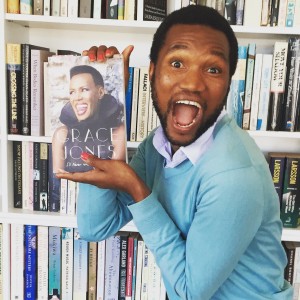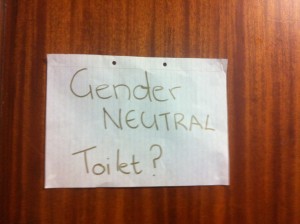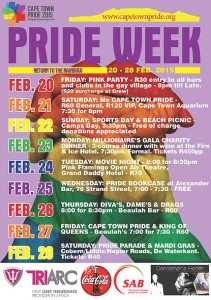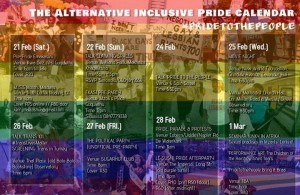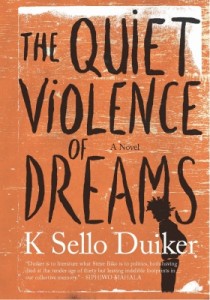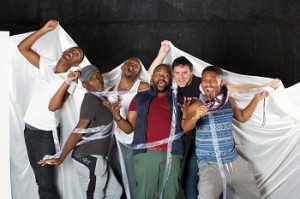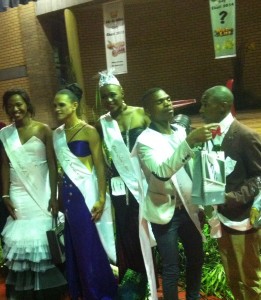Pecola is the little black girl who yearns for blue eyes in Toni Morrison’s novel The Bluest Eye. You will remember the gut wrenching yearning for blue eyes exhibited by Pecola. Pecola prays to God, every night for a whole year, to give her blue eyes so that she also could be beautiful. She prays for blue eyes so that she could also see beauty. She makes her plea to God every night for a whole year because something so beautiful, like blue eyes would take a long time to come to pass.
In the novel Toni Morrison writes: “Each night without fail, she prayed for blue eyes. Fervently, for a year she had prayed. Although somewhat discouraged, she was not without hope. To have something as wonderful as that would take a long, long time.”
After praying very hard for a whole year for blue eyes, Pecola does not get her blue eyes. She then turns to a Psychic Reader for help and this is what the Psychic Reader says:
“Here was an ugly little girl asking for beauty… a little black girl who wanted to rise out of the pit of her blackness and see the world with blue eyes. For the first time he (Psychic Reader) honestly wished he could work miracles.”
In my initial reading of the book, The Bluest Eye, I was struck by the intersection of race, beauty, and gender. The violence of Eurocentric beauty ideals is something I already had been familiar with at the time. A visit to the magazine section of Exclusive Books will quickly show you what is considered beautiful in our society. In reading the book I didn’t labour much to be able see the psychological effects of white supremacy on Pecola and how it affected the way she saw herself and how she saw the world she was navigating.
The psychological violence of white supremacy on the black psyche is something that has extensively been written about particularly in the 60’s and 70’s in America with black American’s fighting against American racism and the negative depictions of black people. Figures such as Malcolm X and Angela Davis, and particularly Angela Davis spotting her Afro would become a popular image that even today evokes Black Power sentiment. Out of this movement came slogans like “black is beautiful” and “the darker the berry, the sweeter the juice.” And currently the psychological violence of white supremacy has also been talked about extensively in the Rhodes Must Fall movement, to substantiate why the Rhodes statue Must Fall, at my current institution, the University of Cape Town. The students in the Rhodes Must Fall movement argue that the statue is a constant violent reminder and glorification of Rhodes and his colonial crimes.
Going back to Pecola in Toni Morrison’s novel, while I could point to the troubling effects of gendered white supremacist notions of beauty, I was blind to the slow violence of the “fervent praying” that even when she was discouraged, she continued to pray. Even when she wasn’t getting blue eyes, she continued to pray. It would take me years before I could see what Rob Nixon (2011) calls the “slow and lasting” violence and make the link between Jesus and prayer and slow violence. You see the slow motion butchering of Pecola by praying every night for a year for blue eyes, ironically I was sluggish in picking this up. So my sluggish, my own slow realisation of the slow violence of white Jesus and of prayer is indicative of the very imperceptible nature of this form of violence. My own negation of this particular violence reveals the way in which this is not considered violence but just the way things are. Jesus and prayer is what people call upon when they are distressed.
So the character of Pecola in Toni Morrison’s novel was instrumental in shaping my thoughts on the slow psychological violence of Jesus, and prayer on the black psyche. The pain conveyed by Toni Morrison is slow and immense and pushes me to critically evaluate the idea that Jesus and prayer are violent. I couldn’t, I still can’t get over the psychological destructiveness of how she prayed for a whole year for pretty blue eyes, blue eyes she will never attain. You have to appreciate the fuckery of it all: here is a black girl praying for blue eyes from a white God – it is the epitome of white supremacy – a black girl asking to be saved by a white God by making her white. Because lets face it asking for blue eyes is to ask for whiteness.
When I was in school and when I attended church, I was taught that I should try to be more like Jesus. There are multiple scriptures in the bible that call on black people to be more like Jesus. John 13: 15, John 15:4, John 15: 10, First Peter 2:21, First John 3:24, and the list goes on. Now in my Sunday school books Jesus had long golden and sometimes brown straight hair with blue eyes. In the many black houses I have visited, the pictures of the last super or of Jesus and his disciples are of European descent. This is the Jesus that black people must pray to and want to be like. There is no escaping the calamity of the relationship between black people, Jesus, and white supremacy.
You see reading this book I understood Pecola because I was Pecola. I too grew up in a church going household. The first church I ever went to was the Don Bosco Roman Catholic Church in Port Elizabeth. See as a little boy I also used to pray, I used to pray for a deeper voice because mine was allegedly too girly, I used to pray to stop lusting after other boys, I used to pray that I played better soccer, because being a black boy in the township and not being able to play soccer is social suicide. I prayed to be more butch. I prayed to be normal. As a young boy I was aware that yearning after other boys is playing with my chances of accessing heaven. I was experiencing ridicule for my gender non-conforming tendencies.
Of course like Pecola in Toni Morrison’s novel I prayed to no avail, I still have an allegedly effeminate intonation, I still had dirty thoughts about other boys and I developed an aversion to sport.
When I think of Pecola praying and I think of my young self-praying, I am held captive by the slow production of self-hate. For both Pecola and my young self, prayer and in turn Jesus are an active participant in the slow production of self-loathing. The double effect conundrum is that Jesus is the reason for the self-hate, and he is also the fixer of the reasons you self-hate, which is why you pray. There is a slow violence in the promise of prayer; there is a slow violence in living life in the hope that things will be better once God decides to intervene. The slow violence is in the constant nature of prayer; it is the everydayness of prayer that is destructive; it is the constant need to feed the beast.
Currently in black South African communities God, Jesus, and prayer have a very strong hold in the way people live their lives. When I think of black churches, black funerals, and other black spaces like a moving bus, it is common to hear songs and preaching about the New Jerusalem. I want to focus on the narrative of the New Jerusalem, the coming of the New Jerusalem to be exact, because this narrative plays a crucial role in the construction of black people’s lives. The New Jerusalem narrative filters through black lives, and determines the ways that black people respond to life. You must understand that the New Jerusalem is more than a geographical location, it is an ideology.
Now you must imagine that people go to church almost every Sunday. These messages about the New Jerusalem they hear on a weekly basis. Some people go to church more than once a week. The New Jerusalem narratives mostly function on a subconscious level. These New Jerusalem narratives manifest gradually, what Rob Nixon (2011) terms “a violence of delayed destruction that is dispersed across time and space.” This is what I am trying to demonstrate here. These narratives are quite alive in reality, they manifest in black people’s lives.
The “New Jerusalem” first appears in the Book of Ezekiel as a prophecy. It also appears in Revelations 20-21. As with most bible scriptures, what the New Jerusalem narrative means varies from church to church. I would imagine the white English interpretations of the New Jerusalem might differ from white Afrikaans interpretations; just as both of these would differ probably from the black Xhosa congregations’ interpretations of the narrative. I am really only concerned with black interpretations, particularly Xhosa interpretations.
iJerusalem entsha ezofunyanwa ngabo bathe ngokubephila emhlabeni bazinikela ku Yehova. Abantu abozofumana iJerusalem entsha ngabo bathe bavuma uYesu. Silindile iJerusalem entsha. Translation: Those who have given themselves over to God while on earth will inherit The New Jerusalem. Those who will inherit the New Jerusalem are those who have accepted Jesus. We are waiting for the New Jerusalem.
The question of Jesus is a pressing matter for black people’s liberation because the construct of a white Jesus is one of the strongest ways black people are held captive. Here I am NOT concerned with the issue of whether Jesus is real or not, whether he lived or not, whether he is really blond or not. I am interested in interrogating the slow violent construct of Jesus and the New Jerusalem narrative as real in the ways that black people experience it and live it. I find the narrative of “The New Jerusalem” and what that ideology represents a slow motion butchering of the black psyche. It impedes self-realisation and it hinders the rejection of inferiority complex that plagues the black self.
Firstly the Coming of the New Jerusalem narrative is closely linked to the narrative of “storing your wealth in heaven.” This is amongst the most popular bible quotes, that one should not accrue wealth whilst on earth, they should rather go to church and store themselves illusive “heavenly treasures.” This narrative is troublesome because is promotes complacency in black people. It promotes the idea that people need not try and be wealthy, while wealth would improve their lives. It paints the idea of wealth in a negative light for black people, while others; predominantly white others are enjoying wealth right here on earth.
The irony is that it is people who used to worship ancestors before the arrival of Europeans who are now obsessed with the construct of Jesus. You have to appreciate the peculiarity of it all, that although black people have been “emancipated” from colonialism and in South Africa also from apartheid, they continue to be enslaved to a Jesus that was an instrument in their colonisation.
The storing of wealth in heaven narrative is connected to my second point, which is the construction of poverty as virtue. Black people aided by the church often couch poverty and struggling as virtuous things. That it is noble to be poor, that it is better to be poor, and all of this is captured of course in the bible verse that it is easier for a camel to pass through the eye a needle than it is for a rich person to inherit the kingdom of god.
The narrative of the New Jerusalem linked with the issue of storing wealth in heaven and then paired with the construction of poverty as virtuous has destructive manifestations for black people. These narratives ensure that the cycle of poverty is entrenched in black families because generations of black people do not leave inheritance for their children. These narratives create self-loathing black people, and then exploit that self-loathing to sustain systems of exploitation. The New Jerusalem narrative pacifies black people from demanding more in this life; demanding more from their relationships, their work life, their communities, and their government. To echo Karl Marx, these narratives encourages black people to believe that the afterlife will be better which lulls them in the current life, which renders them incapable of demanding a decent material life.
Black Consciousness pioneer Steve Biko was very much attuned to the issue of Jesus as a black problem. Biko asserted that “because the white missionary described black people as thieves, lazy, sex-hungry etc, and because the missionary equated all that was valuable with whiteness, our Churches see these vices not as manifestations of the cruelty and injustice which blacks are subjected to by the white man but inevitable proof that after all the white man was right when he described us as savages.” Frantz Fanon also issued warnings about Jesus in Concerning Violence when he said, “The church in the colonies is the white people’s church, the foreigners church. She does not call the native to god’s ways but to the ways of the white man, of the master, of the oppressor. And as we know, in this matter many are called but few are chosen.”
The narrative of “the new Jerusalem” is an ideology that has been slowly slaughtering the lives of black people. The relationship between black people, Jesus, and white supremacy is psychologically damaging and warrants critique. We need to question the concept of Jesus and the things black people do in the name of God. The systematic structure of white supremacy, which is part and parcel of the construct of white Jesus, needs to be challenged and even if God is not willing, it needs to be overhauled.
